- Why Are My Headphones Not Working
- How to Fix the Computer Not Recognizing Headphones Issue
- ❗Run these checks first❗
- Fix 1: Set your headphones as the default playback device
- Fix 2: Change the default sound format
- Fix 3: Use the Playing Audio troubleshooter
- Fix 4: Check if your Bluetooth is working properly (for Bluetooth headphones)
- Fix 5: Update your sound drivers
- Fix 6: Update your Windows
- Fix 7: Restart audio services
- Fix 8: Reset BIOS audio settings
- Computer Not Recognizing Headphones? Fixed!
- FAQ
Headphones have become a staple in our lives, whether we’re catching up on a podcast, enjoying our favorite tunes, or getting ready for a virtual meeting.
But how do you fix the problem when your headphones aren’t workin g on your Windows 10 or 11?
Some users say their Bluetooth headphones are connected, but there’s no audio output. Other users reported that it doesn’t even connect at all. Sometimes, a simple PC restart can fix the problem.
If that doesn’t work for you, we’ve covered practical solutions for both wired and wireless headphones to get them working again. Let’s begin.
For more detailed steps, keep reading.
Why Are My Headphones Not Working
If your headset is not working on your PC, it’s usually due to a small setting issue or a minor glitch. Here’s a summary of all the common reasons why this happens:
| Reason | Explanation | Fix |
|---|---|---|
| Loose or faulty connections | Damaged cables, a loose headphone jack, or a weak Bluetooth signal | Try a different port or reconnect Bluetooth |
| Disabled audio devices | Windows may disable audio devices automatically | Check sound settings and enable headphones |
| Incorrect default audio settings | Another device is set as the default, preventing headphones from working | Set headphones as the default device in sound settings |
| Driver issues | Outdated or corrupted drivers may cause recognition problems | Update or reinstall sound drivers |
| Windows updates affecting audio | Updates can reset sound settings or remove drivers | Check for updates or reinstall audio drivers |
| Hidden enhancements affecting sound | Audio enhancements can cause distortion or mute sound | Disable sound enhancements in sound settings |
| BIOS/UEFI sound settings | BIOS/UEFI settings may disable the sound card | Reset BIOS/UEFI audio settings to default |
How to Fix the Computer Not Recognizing Headphones Issue
Below are the solutions for the issue of both wireless and wired headphones not working, listed from the easiest fixes to the more advanced ones. Follow along and fix the problem in no time:
❗Run these checks first❗
Before diving into more advanced fixes, follow these quick checks to rule out common issues:
- Check for physical damage: If you’re using wired headphones, inspect the cable for frays, bends, or exposed wires, and check the plug for damage.
If the cable is loose near the connector, the internal wiring may be broken. Also, check your computer’s audio jack because it’s possible that dust or debris has blocked the connection.
For wireless headphones, make sure they are fully charged and check for cracks or loose components that could affect connectivity.
- Check batteries and interference (Bluetooth headphones): Ensure your headphones are fully charged and check for any interference.
For example, several things can interfere with your Bluetooth headphones’ connection:
- Other wireless devices (Wi-Fi, Bluetooth gadgets, microwaves)
- Physical obstructions (walls, furniture, even your body)
- Signal congestion (crowded places, smart home devices)
- Device issues (low battery, outdated firmware, long distance)
- Plug in or reconnect your headphones and restart your PC: For wired headphones, plug your headphones into the headphone jack while the computer is turned on. If you’re using a wireless headset, make sure it’s connected via Bluetooth. Then, restart your computer and check to see whether your headphones are working.
Fix 1: Set your headphones as the default playback device
Sometimes, the reason your computer isn’t recognizing your headphon es is simply because they aren’t set as the default playback device. To solve the problem, follow the steps below:
- Press
Windows + R, typecontrol, and hitEnterto open Control Panel.
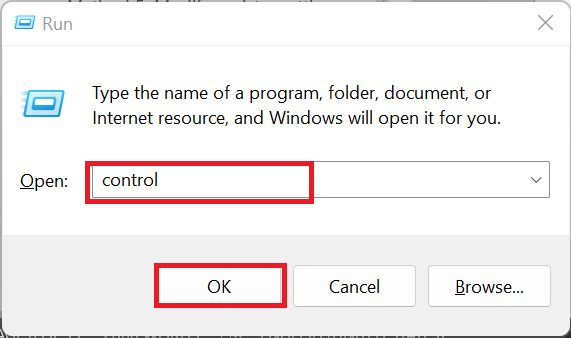
- Click Hardware and Sound.
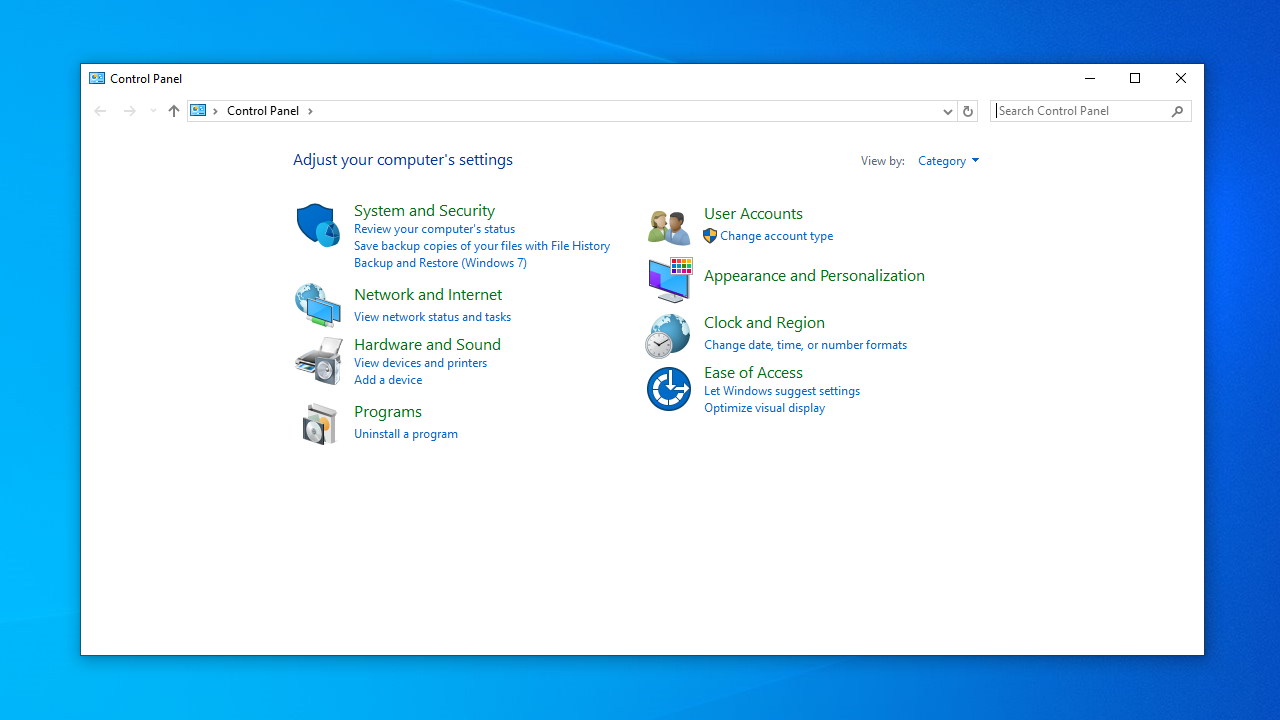
- Then select Sound.
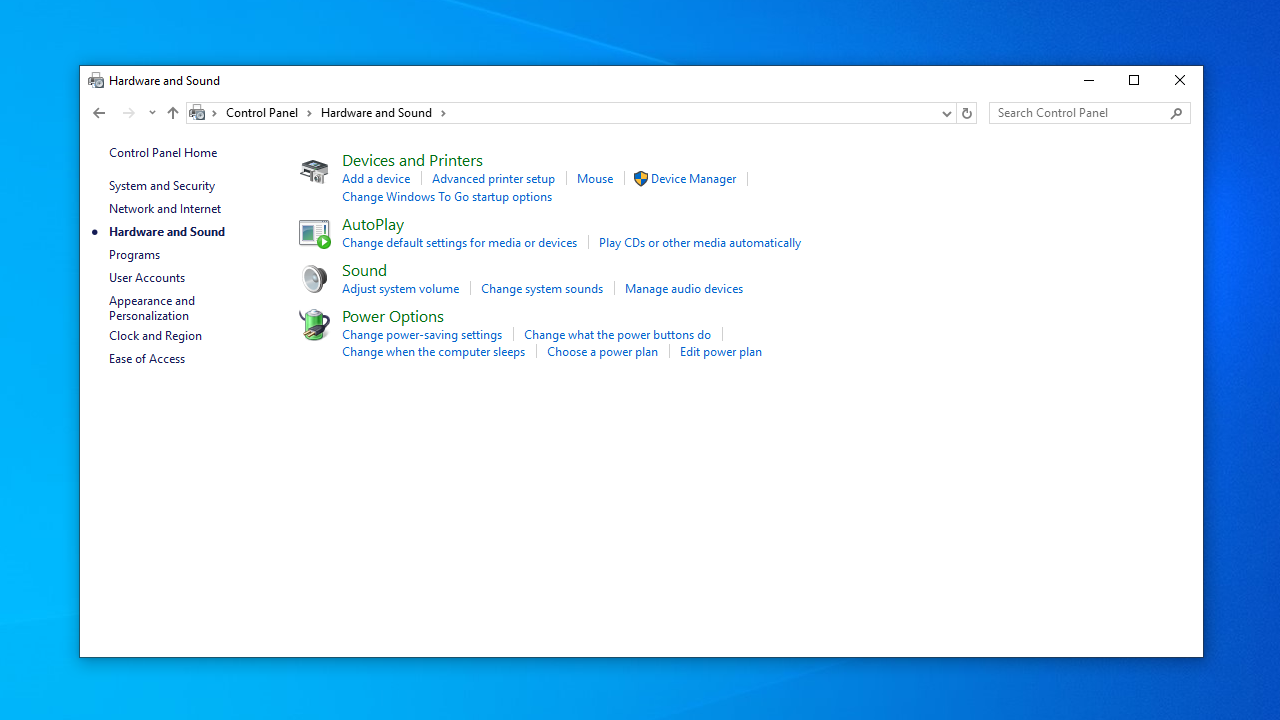
- Look for the Playback tab, and then under it, right-click the window and select Show Disabled Devices.
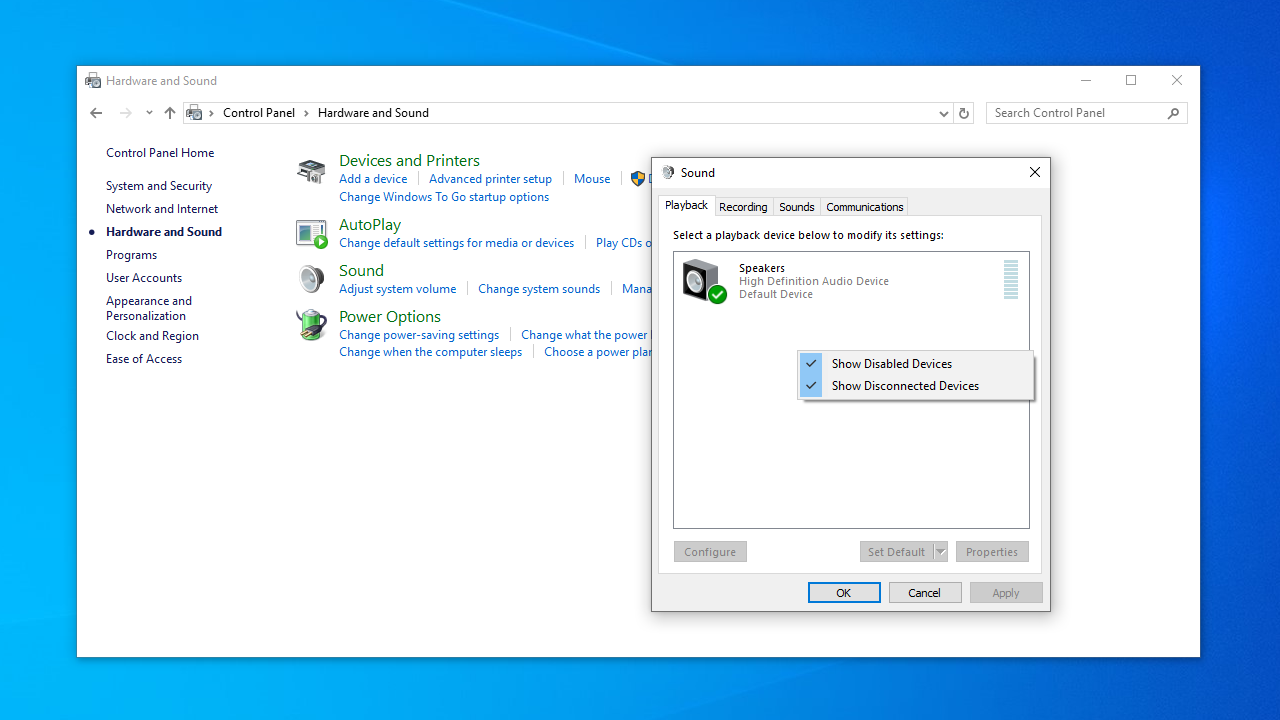
- Right-click on your headphones device and select Enable.
- Click Set as Default Device. Finally, click Apply.
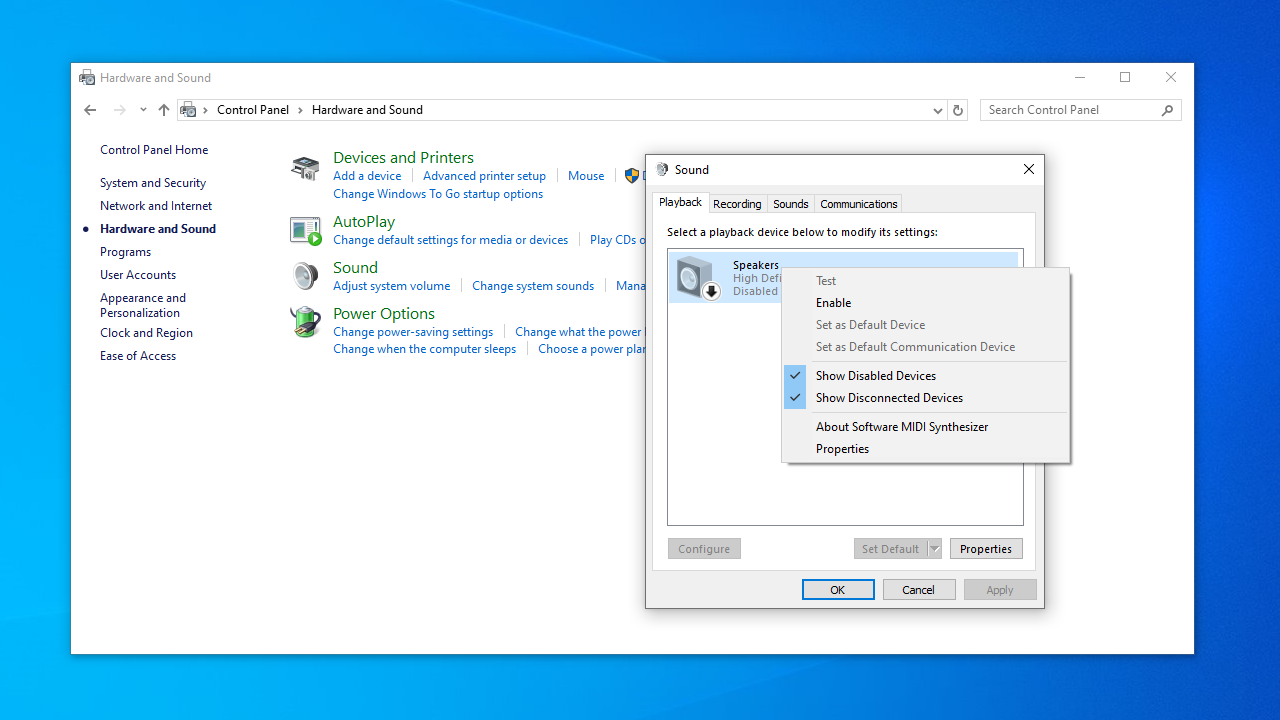
Fix 2: Change the default sound format
If the default sound format isn’t correct, there will be a problem with your headphones.
The recommended format varies by device, but common options include 16-bit, 44,100 Hz (CD quality) or 24-bit, 48,000 Hz (DVD quality). If your headphones aren’t working, try changing this setting to see if it resolves the issue.
Here are some quick steps to change the default sound format on your PC. These steps work for Windows 10 and 11:
- Press
Windows + R, typecontrol, and hitEnterto open Control Panel.

- Click Hardware and Sound.

- Then select Sound.

- Go to the Playback tab and double-click on your default playback device. You’ll find a thick green mark next to it.
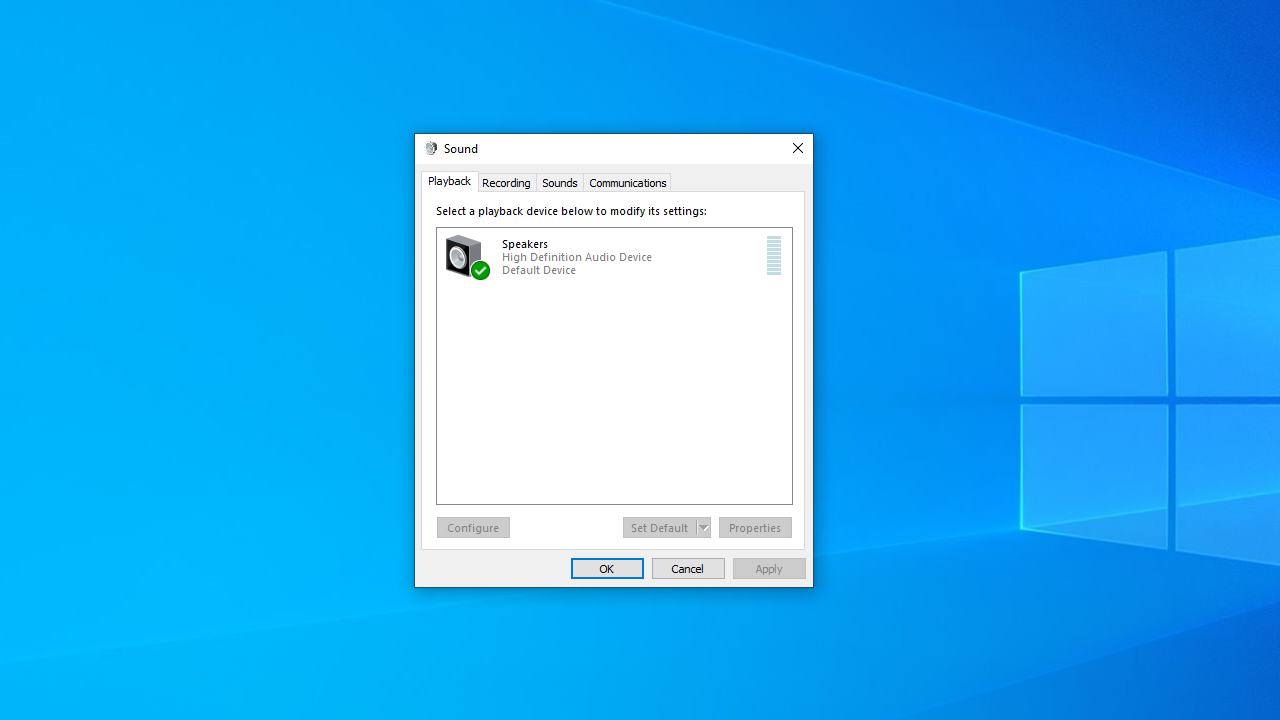
- Switch to the Advanced tab. On the drop-down menu under Default Format, you can change the default sound format.

Fix 3: Use the Playing Audio troubleshooter
Windows has a built-in troubleshooter that can automatically find and fix issues when no sound is coming from your PC . If your headphones are not working, this method can help resolve the issue. Here’s the easiest way to use it:
- Right-click the sound icon in the taskbar and select Troubleshoot sound problems.
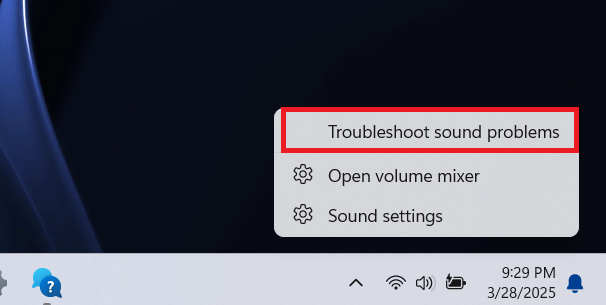
- Windows will start detecting audio issues. Wait for it to finish scanning.
- If prompted, select your headphones from the list of audio devices.
- Follow the on-screen instructions, and Windows will attempt to fix the problem automatically.
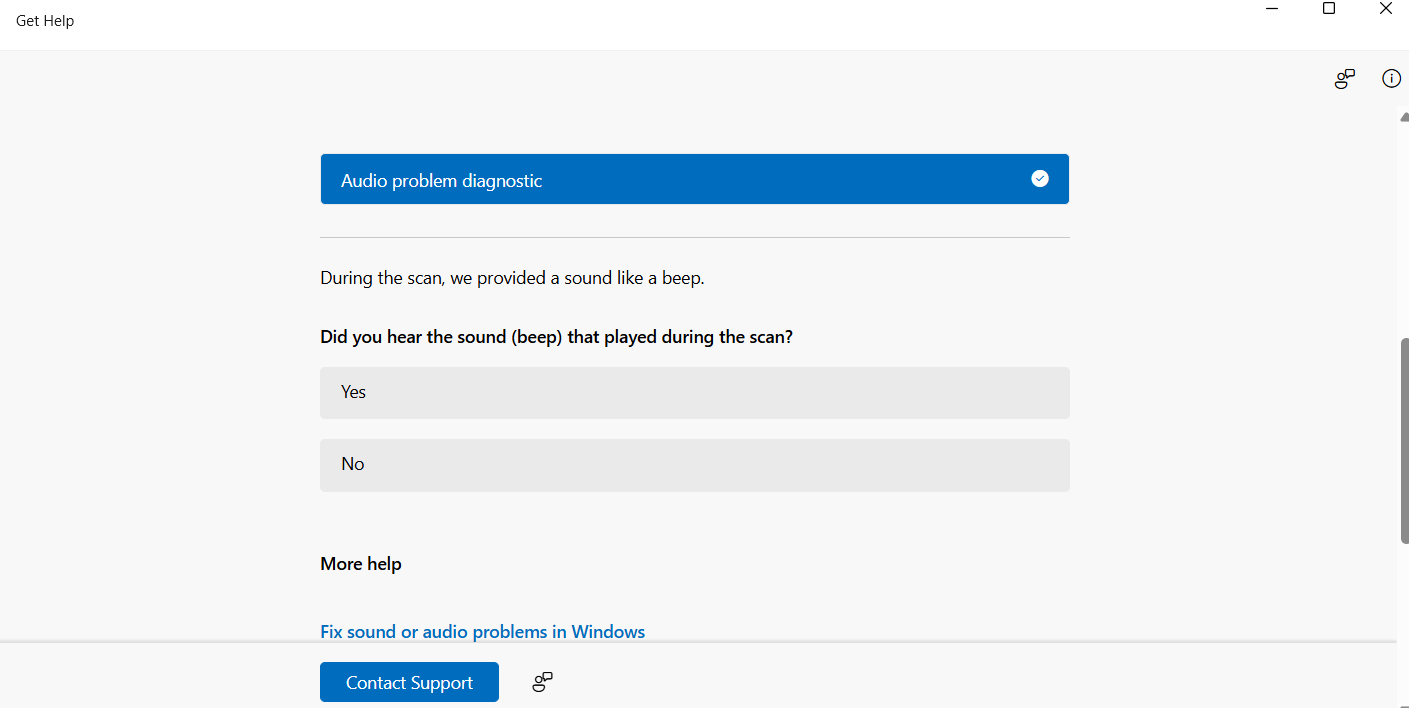
- Once done, test your headphones to see if they work.
Fix 4: Check if your Bluetooth is working properly (for Bluetooth headphones)
If you’re using Bluetooth headphones, make sure Bluetooth is working properly on your computer. But before you proceed, check whether your headphones are compatible with your PC.
Sometimes, using devices that support different Bluetooth versions might cause problems and lead to connection issues, such as when Bluetooth 6.0 headphones are paired with a PC that only supports Bluetooth 5.0.
To check which Bluetooth version your PC supports, follow these steps:
- Press
Windows + Xand select Device Manager. - Expand the Bluetooth section.
- Right-click on your Bluetooth adapter (e.g., Intel Wireless Bluetooth , Realtek Bluetooth Adapter ) and select Properties.
- Go to the Advanced tab and look for the firmware version or LMP (Link Manager Protocol) version.
- Match the LMP version with the table below to determine your Bluetooth version:
| LMP version | Bluetooth version |
|---|---|
| LMP 6.x | Bluetooth 4.0 |
| LMP 7.x | Bluetooth 4.1 |
| LMP 8.x | Bluetooth 4.2 |
| LMP 9.x | Bluetooth 5.0 |
| LMP 10.x | Bluetooth 5.1 |
| LMP 11.x | Bluetooth 5.2 |
To check which Bluetooth version your headphones support, check the user manual or specifications.
After confirming compatibility, go through the below steps to check if your Bluetooth is functioning as it should:
- Go to Settings and click on Bluetooth & devices (Windows 11) or Devices > Bluetooth & other devices (Windows 10).
- Toggle Bluetooth off, wait a few seconds, then turn it back on.
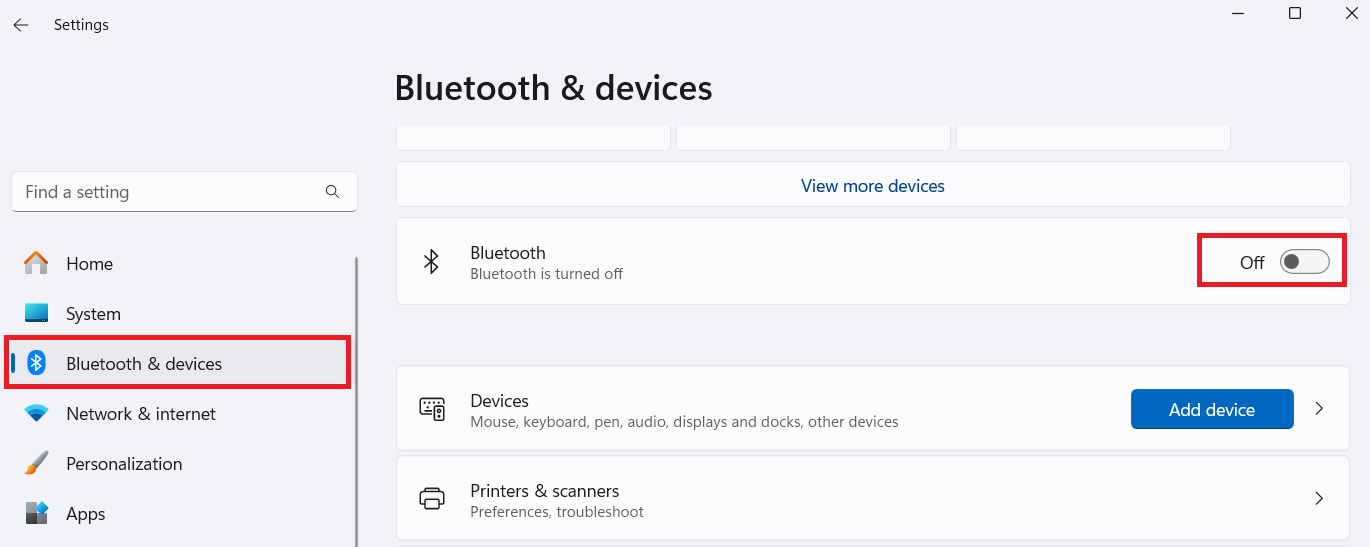
- Next, check if the headphones are connected. If they are paired but aren’t working, click Remove device and reconnect them.

If it doesn’t work, you might need to update your audio driver. We’ll cover that in the next method.
Related: Bluetooth’s Not Working in Windows 10/11: How to Fix?
Fix 5: Update your sound drivers
One of the effective ways to fix headphones not working on your Windows 11 or 10 is to update your audio drivers.
Here’s how to do it using the Device Manager.
- Press
Windows + Xand select Device Manager.
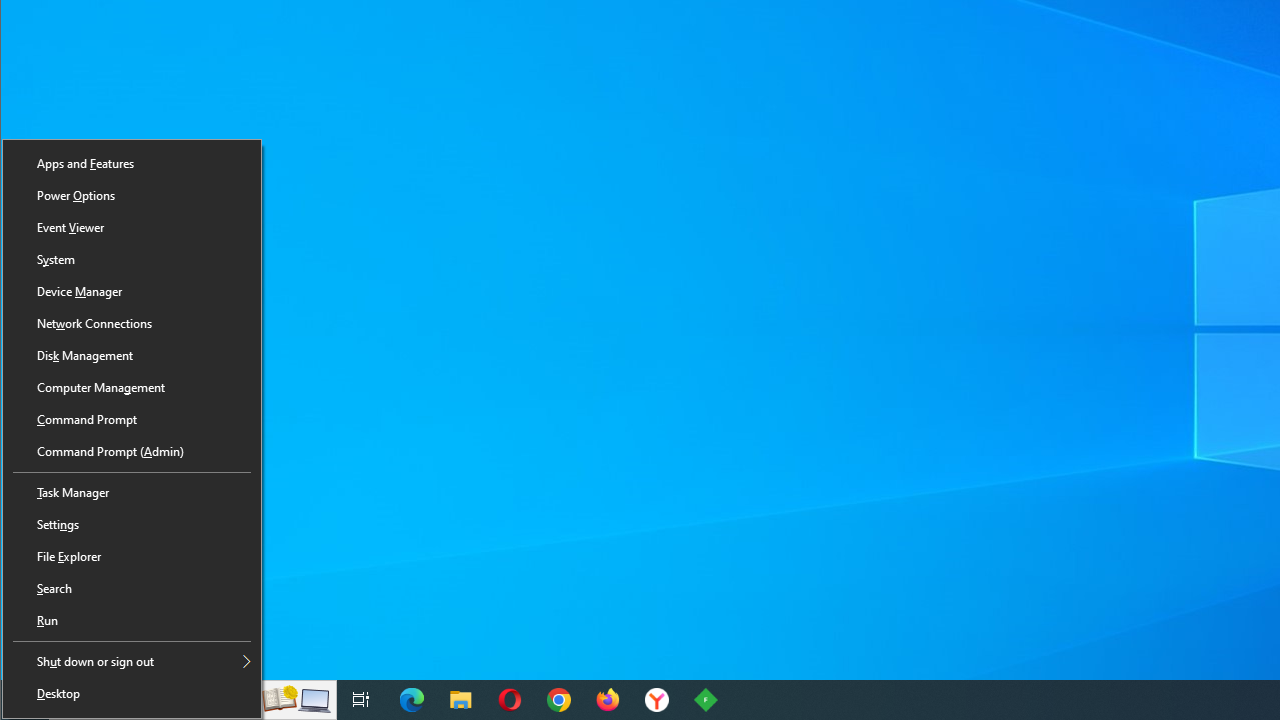
- Search for Sound, video and game controllers and click to expand.
- Right-click on the sound device you’re using and click on Update driver.

- Click on Search automatically for drivers.
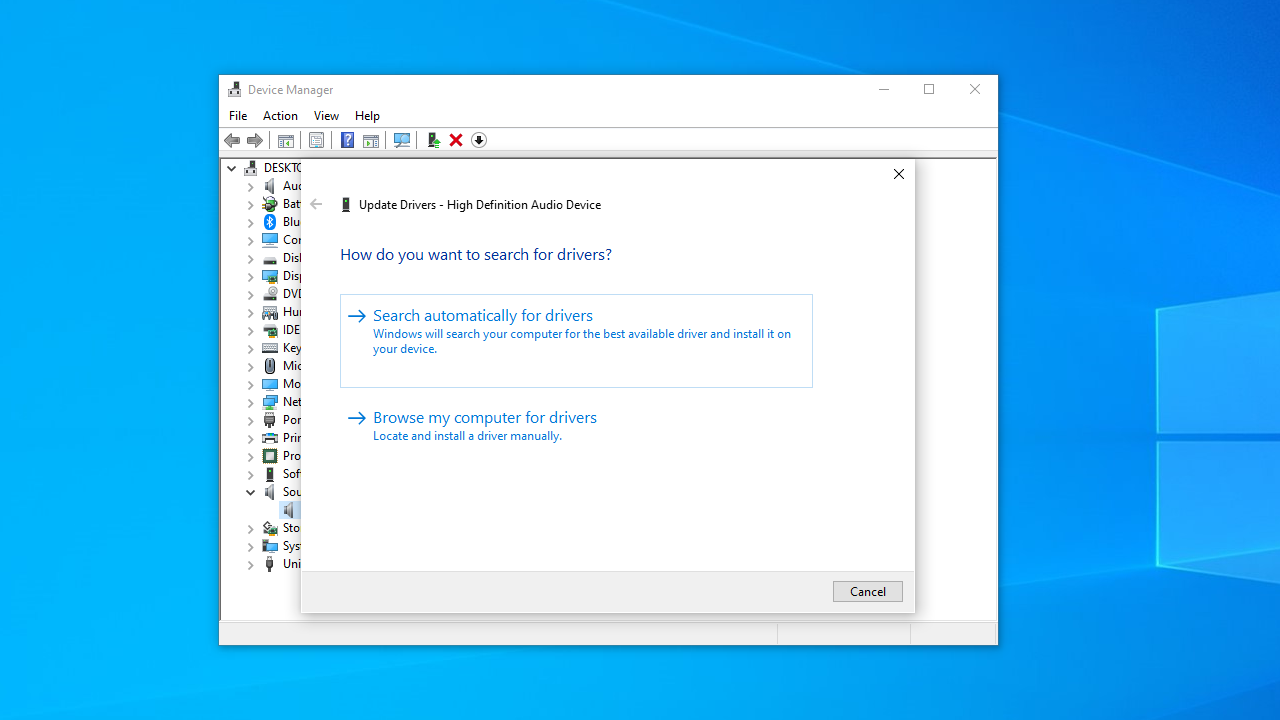
- Wait as it searches for available updates.
- Reboot your computer and check if the issue has been resolved.
Fix 6: Update your Windows
Keeping Windows up to date isn’t just about security—it also ensures your system runs smoothly with the latest bug fixes, performance improvements, and driver updates.
If your c omputer isn’t recognizing your headphone s, a missing or outdated system update could be the cause. Microsoft regularly releases patches that fix audio-related issues, such as driver conflicts, Bluetooth connectivity problems , and sound device recognition errors.
Updating Windows can automatically install the latest drivers and resolve software bugs that might be preventing your headphones from working.
Here’s how it works:
- Press
Win + Ito open the Settings menu. - Click Update & Security (Windows 10) or Windows Update (Windows 11).
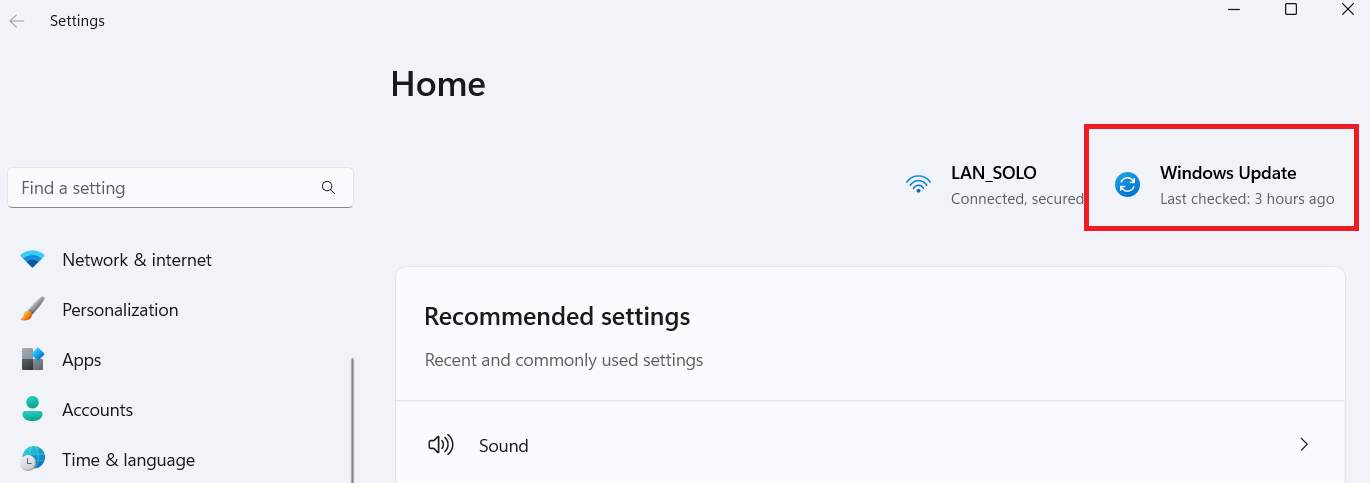
- Select Check for updates , and Windows will scan for any available updates.
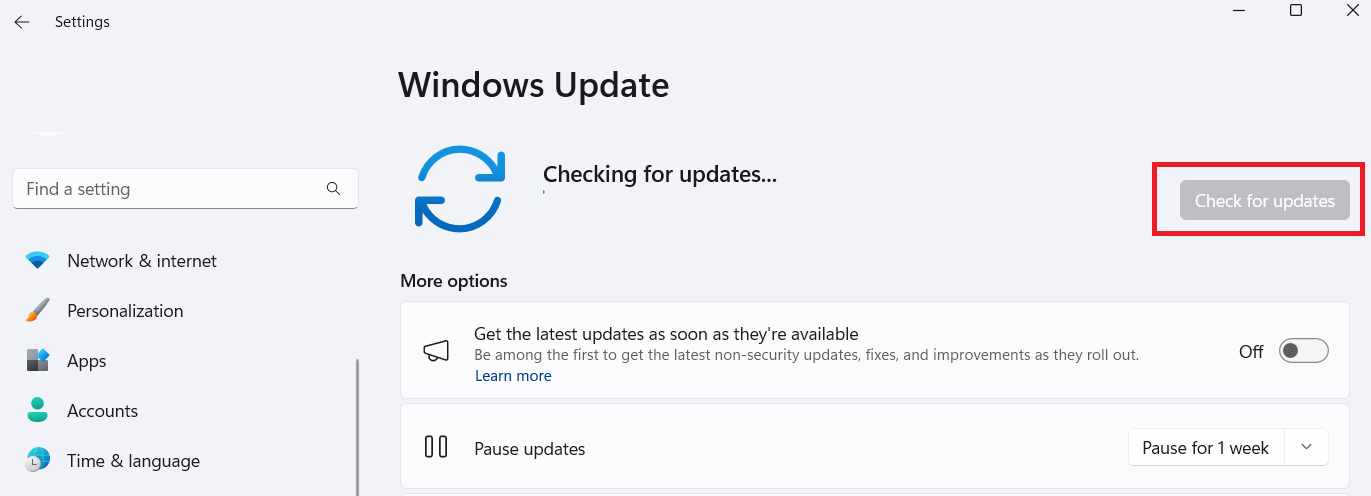
- If updates are found, click Download & install.
Once the installation is complete, restart your computer and check if your headphones are recognized.
Fix 7: Restart audio services
If your headphones aren’t being recognized, the Windows Audio services might not be responding . These services control sound-related functions, and restarting them can often fix audio issues. Here’s how to do it:
- Press
Win + R, type services.msc , and hitEnter.
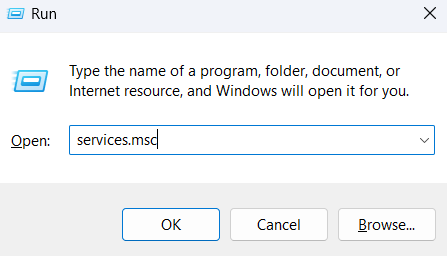
- Scroll down and locate Windows Audio .
- Right-click Windows Audio and select Restart .
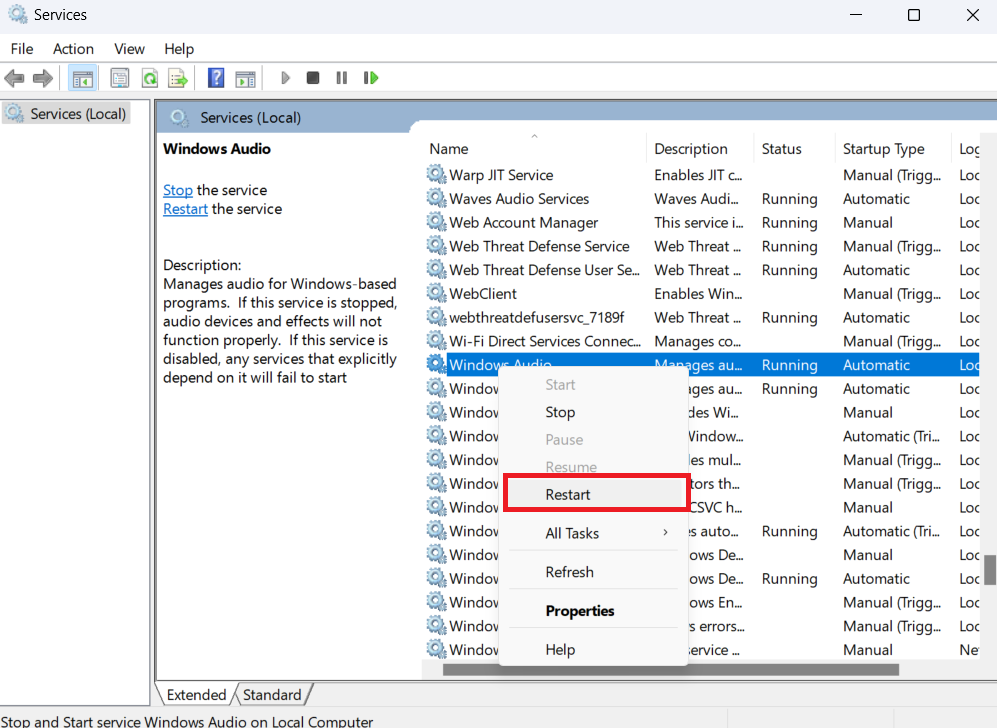
- Do the same for Windows Audio Endpoint Builder .

Once restarted, plug in or reconnect your headphones to see if they are working.
Fix 8: Reset BIOS audio settings
If your headphones are still not working, your PC’s BIOS or UEFI settings might be disabling your sound card. This can happen due to buggy system updates, power issues, or manual changes. Here’s how to go about the process for both Windows 10 and 11:
- Restart your PC and press the required key (usually
F2,F10,Del, orEsc) during startup. - Look for a section labeled Advanced , Integrated Peripherals , or Onboard Devices , and search for Audio Controller .
- Ensure that the audio setting, like HD Audio is enabled. If it’s disabled, enable it.
- Press
F10or follow the on-screen instructions to save changes and exit the BIOS/UEFI.
Computer Not Recognizing Headphones? Fixed!
Most times, if the headphones aren’t recognized by your PC, it’s usually something small or easily fixable. We’ve walked through common fixes for both wired and wireless headphones, from checking for physical damage to adjusting settings on Windows.
If after trying all the steps above, your headphones are still not working, it might be time for a deeper look at your hardware or even a replacement. But in most cases, a few tweaks in your settings or connections can get you back on track quickly.
If you have any solutions that worked for you but aren’t covered in this guide, let us know in the comments below!
FAQ
To rule out other issues, try your headphones on another device to make sure they work. Also, check if there’s dust or dirt in the jack and carefully clean it. If none of these help, the jack could be broken, and you might need to get it fixed or replaced.
![[FIXED] Computer Not Recognizing Headphones on Windows 10/11](https://www.auslogics.com/en/articles/wp-content/uploads/2024/08/FIXED-Windows-10-Computer-Is-Not-Recognizing-Headphones-568x343.webp)